SIGHTSEEING
Madrid is not as large as it might seem, especially the central districts. Right in the middle of the city lies the Puerta del Sol, a traffic nexus that is the point from which all distances are measured. Also, the house numbering on every street starts at the end nearest the Sol. West and south of the Sol are the oldest are as of the city, Los Austrias, which contains the royal palace (Palacio Real) and the historic and well-trodden square, Plaza Mayor.
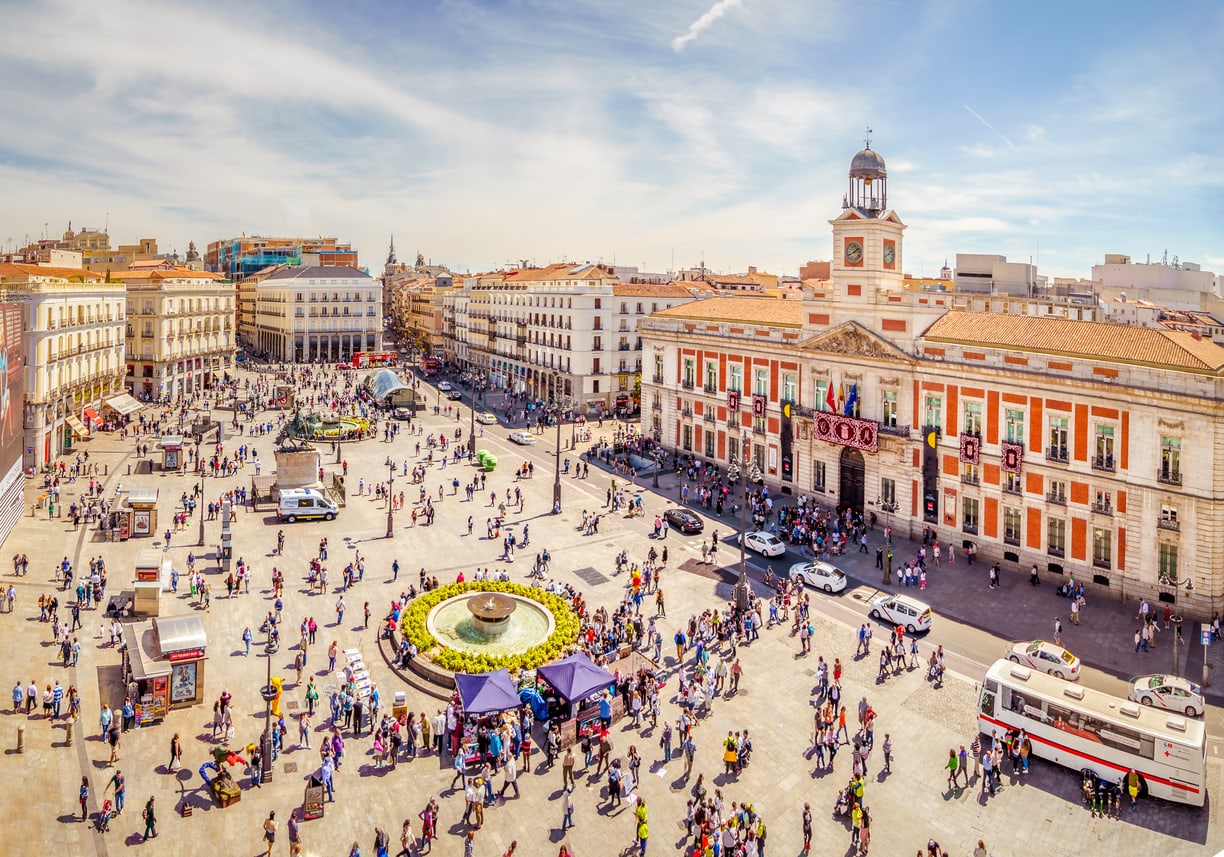
The triangular area to the east and south of the Sol—with the Plaza de Cibeles, Atocha Station, and the Sol at its corners—is one of the liveliest districts in Madrid, home to countless bars and restaurants. This is also where the three big museums stand in a row, and beyond them, the largest park in central Madrid, Parque del Buen Retiro.
Directly south of the Sol is Lavapiés: formerly a working-class area, but now the most ethnically interesting part of the city thanks to a significant influx of immigrants from Africa and Asia.
North of the Puerta del Sol and the parade avenue of Gran Vía, you will find the Malasaña and Chueca districts. The former is an old residential area that has been cleaned up in the last twenty years whilst remaining one of the city’s most relaxed bar districts. The latter has also undergone a rebirth: today, it is Madrid’s hippest quarter, a centre for a culture of clubbing, restaurants and clothing shops. Originally a gay district, it is now best described as broad-minded.
Explore the city like a local and discover the top things to do and see in Madrid, as well as the best restaurants, bars, nightclubs, cafes, and hotels Spain's capital city has to offer, with our comprehensive, up-to-date, and free Madrid travel guide.
Museums
First we have the Prado Museum, officially known as Museo Nacional del Prado (https://www.museodelprado.es/en), is deservedly one of the most famous museums in the world. Since the gallery first opened two hundred years ago, its collections have grown to include over 7000 paintings (although only around 1500 are currently on display). The collection includes Spanish art from Velázquez and some dark works of Goya, as well as some works by several Flemish masters: Peter Paul Rubens, Pieter Bruegel, and Anton Van Dyck.
Another must-see museum is the Reina Sofia Museum (https://www.museoreinasofia.es/en). The third gallery in the Golden Triangle of Art, which includes the iconic Prado Museum, the Reina Sofía Art Centre, and the Thyssen-Bornemisza Museum, is housed in an enormous former hospital dating from the mid-18th century and has since added striking glass and steel external lifts. The collection consists mainly of Spanish works from the 20th century—the most famous of which is, without doubt, Picasso's "Guernica".
The last museum is the Thyssen-Bornemisza Museum (https://www.museothyssen.org/en). The eclectic Thyssen-Bornemisza complements the Prado and the Reina Sofia with works such as 17th-century Dutch paintings, impressionism, Russian constructivism, and pop art, amongst other styles.
Squares, parks and palaces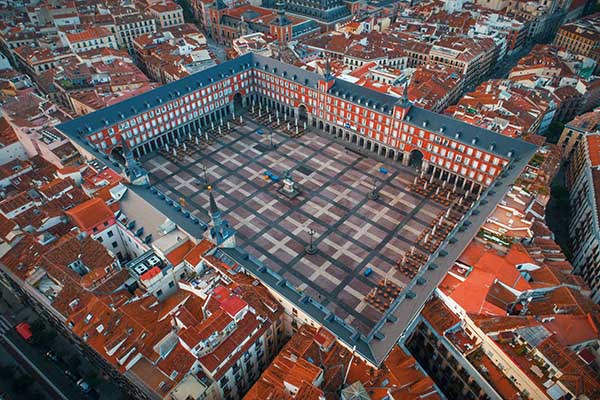 The main square of Madrid, measuring approximately 130 by 95 meters is called Plaza Mayor. There are no less than nine entrances to this majestic plaza. It is a great place to sit down, have a coffee, and people watch.
The main square of Madrid, measuring approximately 130 by 95 meters is called Plaza Mayor. There are no less than nine entrances to this majestic plaza. It is a great place to sit down, have a coffee, and people watch.
Beside squares, there are a lot of great
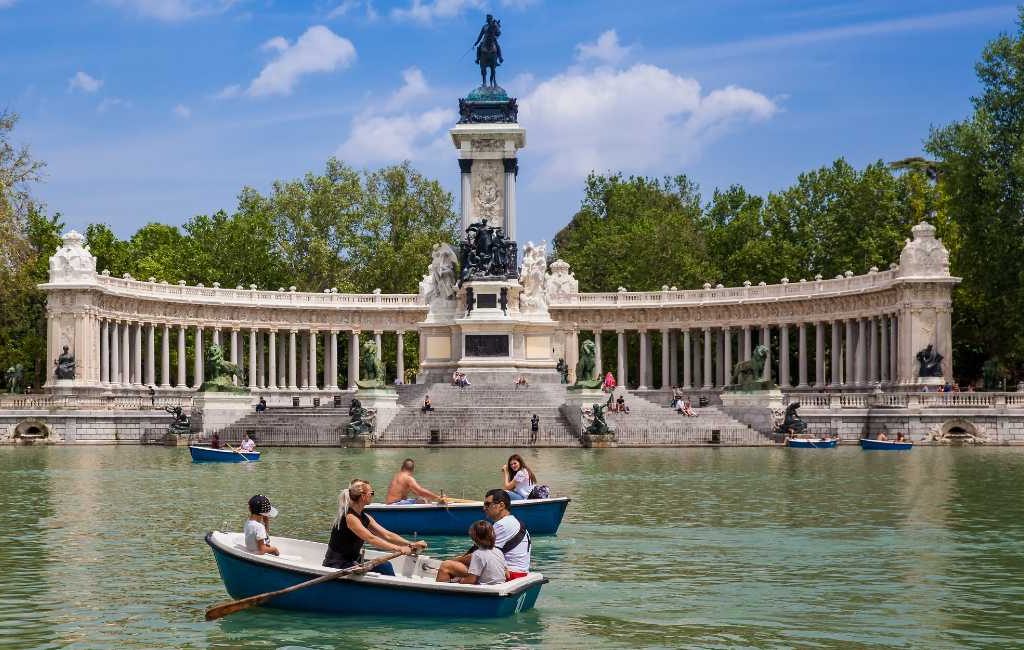
parks like the Buen Retiro Park. In Spanish, this park is called "Jardines del Buen Retiro" or "Parque del Buen Retiro", which means "the park of pleasant retreat". It is, with its 350 acres, one of the largest parks in Madrid and became open to the public in the late 19th century—before that, it belonged to the Spanish royal family.
Some of the things you can enjoy here, with the right timing, are puppet shows, book fairs, and free concerts. You can also rent a rowboat and paddle your way around the Estanque, or enjoy a horse-drawn carriage.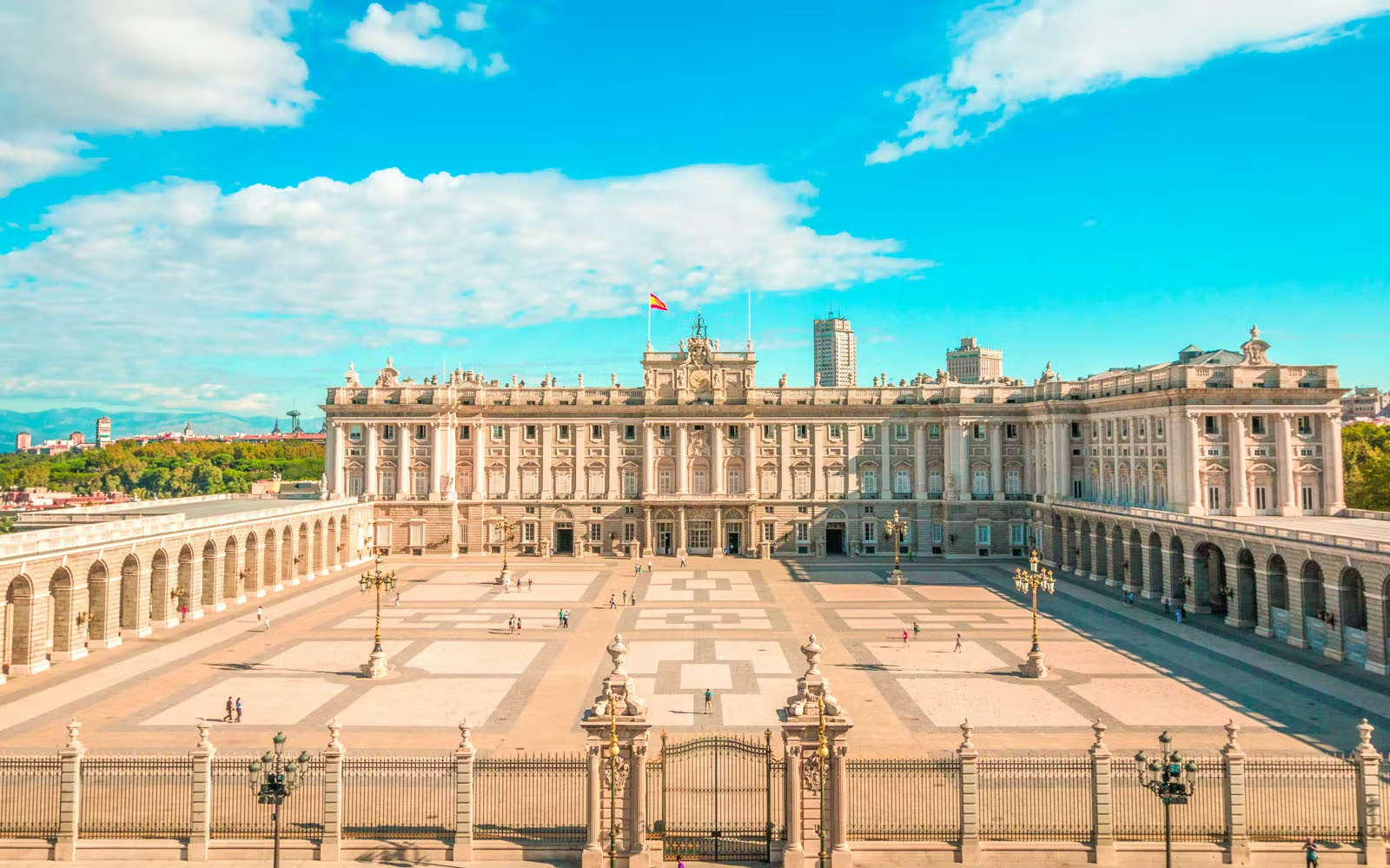 Another highlight of Madrid is the biggest royal palace in Europe, the Palacio Real de Madrid. it has a whopping surface of 135,000 m2 and 3418 rooms. Not only is the building itself a beautiful attraction, but it also offers glorious gardens outside and beautiful frescoes, furniture, and paintings inside. This magnificent creation dating from 1764 was built to replace the Alcázar castle that had burned down thirty years before. Visitors are given access to almost the entire palace, including the Armoury and Pharmacy.
Another highlight of Madrid is the biggest royal palace in Europe, the Palacio Real de Madrid. it has a whopping surface of 135,000 m2 and 3418 rooms. Not only is the building itself a beautiful attraction, but it also offers glorious gardens outside and beautiful frescoes, furniture, and paintings inside. This magnificent creation dating from 1764 was built to replace the Alcázar castle that had burned down thirty years before. Visitors are given access to almost the entire palace, including the Armoury and Pharmacy.
Food, drinks and culture
From royal palaces to flea markets, Madrid has it all. El Rastro flea market is said to be the largest flea market in Europe with some 3,500 stalls covering the winding streets of the oldest residential part of Madrid. Remember that the real finds are mostly located on one of the side streets, and always keep a close eye on your belongings, as it is a popular area for pick-pockets.
One of the most fun ways to discover Madrid is by their Tapas & Wine tasting tours. Discover Madrid's vibrant culinary scene on a delicious tapas tour. Savour tasty traditional delights like Iberian ham, salted cod, and rich chickpea stew and sip excellent Spanish wines. All the while, you learn about the local ingredients from your expert guide. Pay a visit to Mercado de San Miguel (https://mercadodesanmiguel.es/en/) to experience the most significant flavours of Spanish cuisine. Just a few steps away from Plaza Mayor, this popular wholesale food market, now one of the most important in Europe, offers some of the city's best gourmet foods and delicacies, including wine, cheese, ham and cured meats, and is a great place to stop for afternoon tapas and a glass of wine.
Pay a visit to Mercado de San Miguel (https://mercadodesanmiguel.es/en/) to experience the most significant flavours of Spanish cuisine. Just a few steps away from Plaza Mayor, this popular wholesale food market, now one of the most important in Europe, offers some of the city's best gourmet foods and delicacies, including wine, cheese, ham and cured meats, and is a great place to stop for afternoon tapas and a glass of wine.
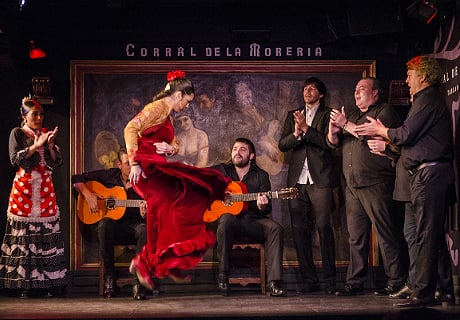 Once you're ready you can enjoy Madrid, who is renowned all over the world for its excellent Flamenco performances. The popular dance can be seen in several taverns and bars around the city. Flamenco is not only a dance but also the music to which the dance is performed. It originated in Andalusia and is known mostly for songs accompanied by guitar and complex techniques of foot-stomping, hand-clapping, and the use of castanets. The best place to go for a breathtaking exhibit of Flamenco is "Corral de la Moreria" (https://www.corraldelamoreria.com/).
Once you're ready you can enjoy Madrid, who is renowned all over the world for its excellent Flamenco performances. The popular dance can be seen in several taverns and bars around the city. Flamenco is not only a dance but also the music to which the dance is performed. It originated in Andalusia and is known mostly for songs accompanied by guitar and complex techniques of foot-stomping, hand-clapping, and the use of castanets. The best place to go for a breathtaking exhibit of Flamenco is "Corral de la Moreria" (https://www.corraldelamoreria.com/).